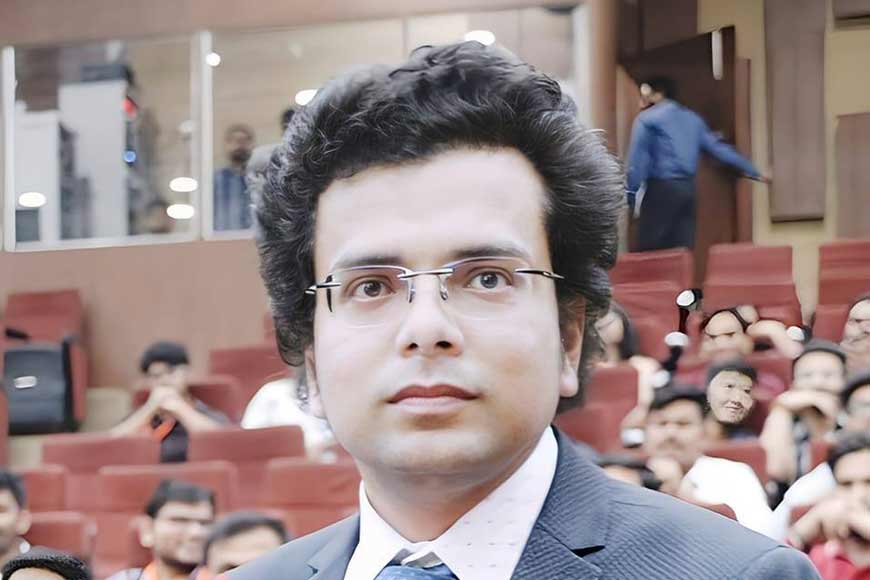Bengali scientist's groundbreaking invention transforms global industry – GetBengal story

A ground-breaking innovation to combat global warming and industrial pollution has been achieved by a young Bengali scientist, Mainak Ray, who obsoleted the 8-decade-old conventional technology from the refining and petrochemical sectors.
Mainak has managed to accomplish in just two weeks what has taken some of the world’s leading scientists years to research. His discovery has garnered international recognition, attracting interest from major corporations worldwide. A top-tier Indian oil refinery has already set up a new plant based on his invented technology.

Scientist Ray was born and brought up in Medinipur town at undivided Midnapore District and completed his schooling at Midnapore Collegiate School. Ray earned his B.Tech. from Haldia Institute of Technology. Following this, he pursued advanced studies at the prestigious Rajabazar Science College in Kolkata. Further, he honed his expertise in project management by completing the Project Management Professional (PMP) program at IIM Rohtak. He researched at IIT-KGP and IIT-Guwahati. In addition to his academic achievements, Scientist Ray is a leading industrial project investigator for industry-academia projects in various IITs and CSIR institutions in India.
Industrial caustic waste is a significant pollutant in the global oil refining and petrochemical sectors, as untreated waste can severely damage aquatic ecosystems, deplete oxygen levels, and release hazardous gases like sulphides into the environment. Invented in 1954 by American engineer Frederick Zimmerman, Wet Air oxidation (WAO) is the prevailing method for treating such waste. However, the WAO technology/process is Capital Expenditure (CAPEX) & Operation Expenditure (OPEX) intensive, and sometimes it fails to meet modern environmental requirements effectively to degrade sulphide below 50 ppm in a spent caustic stream. Eventually, t will pose a danger to humanity, industries, and the environment.
This is where Scientist Roy made a Groundbreaking invention that has a magical impact on industry and the environment. His newly developed process obsoletes the conventional WAO technology (which requires MP steam, an oxidising agent, and a compressor run) by the invented method, which can operate in ambient conditions without any steam or hazardous chemicals. His Process can treat high-strength caustic waste (50000 ppm) more efficiently and at a lower cost/Lower OPEX (less than 5 times) than the traditional WAO method. This method successfully vetted various process safety management rules and conditions. The sulphide degrades to below one ppm during each plant scale operation/trial, which is unbelievable as a consistent result and a challenge on an industrial scale. This technology he demonstrated for 5 m3/hr or “5000 litres per hour,” spent caustic treatment and can be fit for any scale of industrial operation presently running around the globe by conventional WAO treatment.
Any technology, called Technology Readiness Level 1 (TRL1), starts from the lab. When it reaches the commercial scale and is implemented at the industrial scale, it is called Technology Readiness Level 9 (TRL9).
The steps between TRL 1 and TRL 9 are time-consuming and mysterious puzzles in the scientific community. Most scientists fail to achieve TRL4 or TRL5 technology, but this scientist achieved the TRL9 level technology from India in just two weeks.
The world depends on technology from the USA or Europe, where Dr. Ray’s invention places India in the front row, leaving behind the USA/Europe.

His relentless curiosity and drive to ask "what is" and "what if" have guided his remarkable achievements. Roy's achievements are not confined to environmental technology. He has developed new chemical treatments and medicines that are currently awaiting patents.
When GB asked him about his vision for Bengal’s future role in global science and technology? Roy's love for his roots keeps him motivated and driven. He said Bengal has the geopolitical and strategic advancement for new industry setup and huge revenue-gaining potential. He also added that Bengal has immense potential for growth in new refining, petrochemicals, specialty chemicals, pharmaceuticals, and clean technology industries and affirmed his commitment to always work for its betterment and interest in expressing his ideas and support for the Bengal government in creating new industries as well as a high revenue-gain state. New Bengal, where Bengal can lead India’s economic growth.











